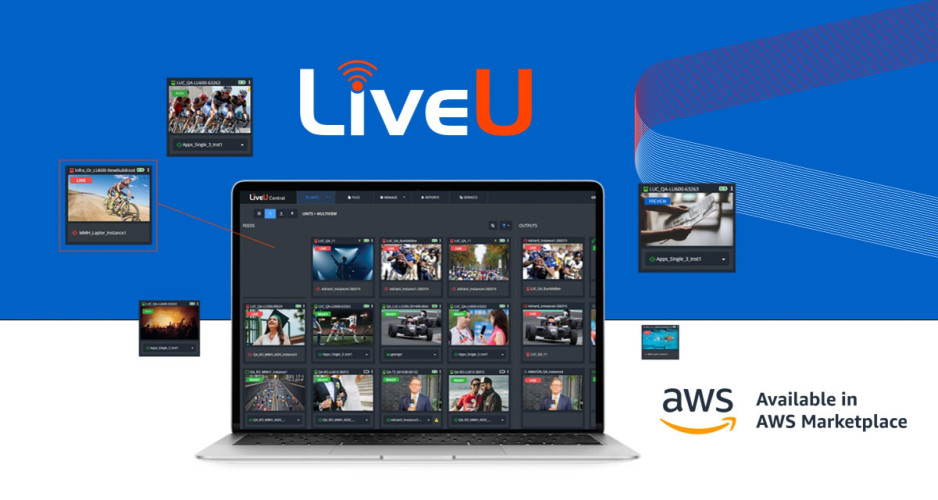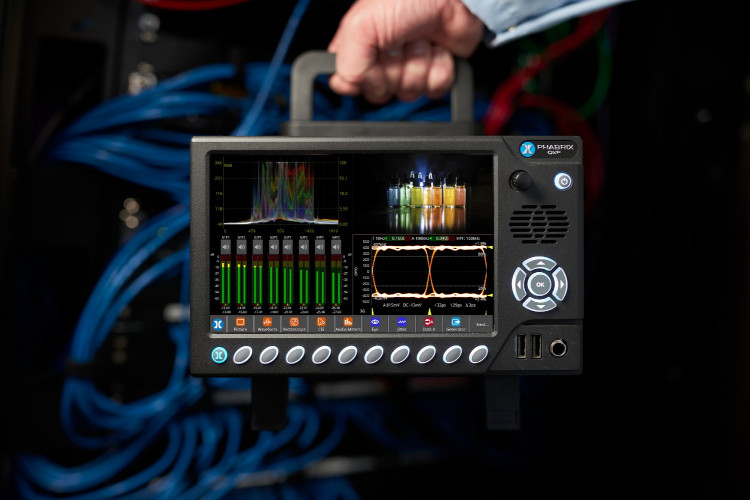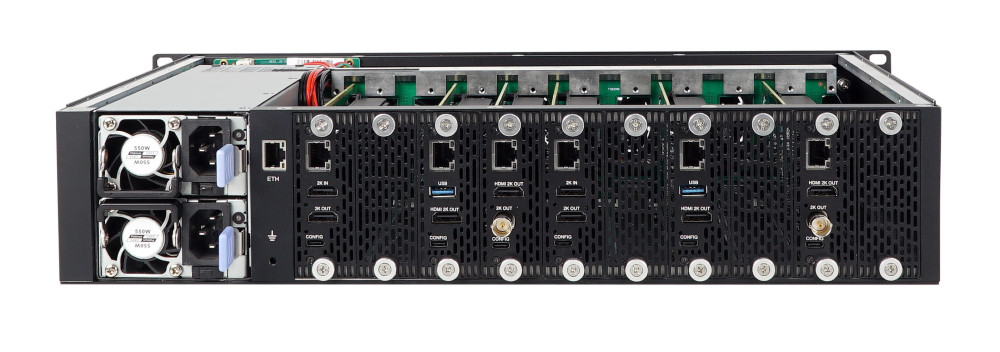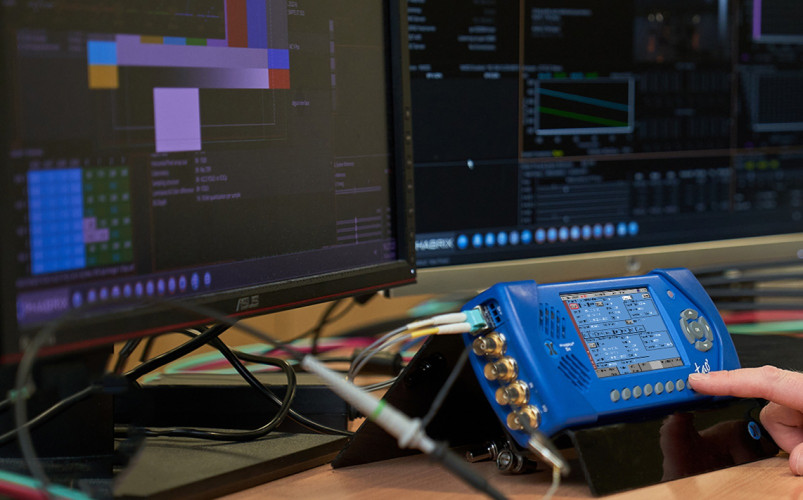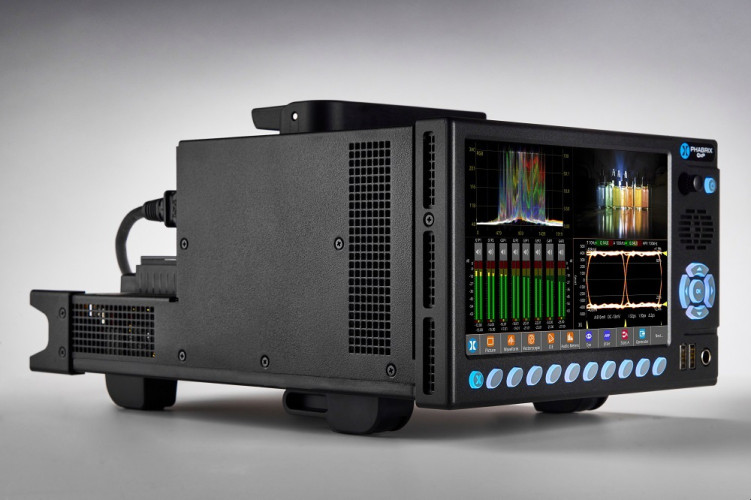“Test and Measurement”. Shudder. Like “Health and Safety”, “Bus” and “Replacement Service” or “Keith and Orville” it’s a collocation of words that fills me with dread. Seriously, who wants to read about “Test and Measurement”? Well, as it turns out, the answer is: quite a lot of people. Because, despite its lack of glamour, it is hugely important.
As you read this article there is a very good chance that somewhere in the world an engineer has just been summoned to the control room of a TV studio or an OB van by a director because “one of the cameras doesn't look right”. Perhaps someone has fiddled with the knobs or accidentally changed the gamma settings.
Whatever has happened it’s a potential disaster for the live broadcast that is about to take place and for everyone involved from the director right up to the broadcaster. This is where test and measurement (T&M) comes in.
The engineer will use his experience, talent and T&M armory to work out what the problem is, test it and resolve it. This is done all day, every day throughout the broadcasting world from field production to transmission. But, most pertinently, it is done before the problem occurs.
If you’re working on a multi-camera shoot, the cameras have to be matched and the eye and jitter levels need to be correct. This requires T&M. During post-production, if you’re working in 2k or 4k you need to ensure that the pictures are ‘legal’ (in a broadcast sense). This requires T&M. In the new file-based world, digital packets need to be tested too, preferably in an automated fashion, as they enter a playout centre for example. That’s also a mission for T&M. And so on.
In short, T&M tools allow an engineer to determine whether or not the kit you are about to use is up to spec and ensure that the signals you will send and receive are correctly set up.
So, what devices do you need to perform such acts of heroism?
In the good old days, T&M was fairly simple. Things like NTSC and PAL didn’t cause too many headaches. Now, engineers have to deal with HD, 3G, 3D, IT, IP, fibre etc all within the parameters of an SDI focused world. The upshot of this is that T&M equipment needs to display a whole range of signal data in a quick and simple way. And in many cases it needs to be portable.
Handheld T&M devices are now commonplace. Often found strapped to the belts of engineers the land over, they combine various tools for testing and measuring signals.
One such device is PHABRIX’s SxA, an all-in-one 3G-SDI, HD-SDI and SD-SDI portable video test signal generator, monitor and analyser that even does AES audio testing and monitoring. Used in studios, OBs, control rooms and even by other manufacturers, its USP is its ability to generate at one standard and analyze at another within a single device.
Then there’s the Harris HD-STAR, a portable, battery powered, multi-format HD and SD monitor generator that features a video test signal generator, color monitor, waveform monitor, vectorscope, serial data analyzer and an audio analyzer/monitor.
Or Hamlet’s MicroFlex, another multi-format multi-standard handheld waveform, vector, audio and picture monitor. This one has a built-in 3.5\" VGA TFT display that shows the image in 4:3 or 16:9 formats along with conventional waveform, vector and audio displays and error data analysis. Six plug-in FlexiScope option modules can be added to allow operation in a variety of current formats. For those of you that like acronyms, the MicroFlex is capable of monitoring 3G, HD SDI, SD SDI and composite video signals and audio in its embedded or AES/EBU formats and generating HD SDI and SD SDI video and audio signals (depending on the installed modules).
Audio is an important area for T&M, not least with the ongoing loudness debate and the complexity of testing and monitoring up to 16 channels at anytime. Then there’s the requirement to check Dolby E in transmission and lip sync. Dolby makes a handheld diagnostic tool that can monitor and generate Dolby E as well as Dolby Digital and PCM bitstreams. The DM100 Bitstream Analyzer has a built-in test-signal generator and can be used to check anything from satellite playout to a home theatre system.
Waveform monitors and vectorscopes are still hugely important. For example, a waveform monitor (occasionally referred to as a ‘light meter for video’) will display the brightness of a picture and in a multi-camera situation can help to calibrate the camera, ensuring that all the feeds are the same. They can also be used to monitor video signals, diagnose a signal problem, assist with exposure decisions or aid colour correction.
One poplar option for camera hire companies is the LV5380 from Leader. This waveform vectorscope is a multi-SDI monitor with a TFT LCD screen. Along with an embedded audio signal display featuring Lissajous and level-meter configurations it also offers simultaneous display of two SDI signals, screen capture to USB memory and on-picture gamut error monitoring. Not handheld in the same way as other T&M tools, it is still thin enough, light enough and portable enough to be used for just about any video production or monitoring requirement.
There are others. The Datavideo VS-100 is a miniature signal monitoring system that has HD/SD SDI inputs. Ideal for matching the outputs of cameras on a live production it can be used in various modes including waveform monitor, vectorscope, parade and histogram. It also has HDMI outputs for use with cheaper HD monitors.
Finally, there’s Tektronix’s WFM2200. Launched at NAB 2012 and ideal for both field and studio operation the WFM2200’s display can be partitioned into four quadrants, each displaying a different parameter, such as waveform, vectorscope, audio levels and closed-caption decode. This particular portable device also has a built-in video/audio signal generator.
With all that in mind, hopefully you can see just how crucial T&M is and how mobile devices have now come to the fore. We all know that T&M isn’t sexy. But to say it’s essential would be an understatement. Perhaps if we called T&M “disaster avoidance”, “technology rescue” or “the broadcast emergency service” it might not have such a bad rep.










